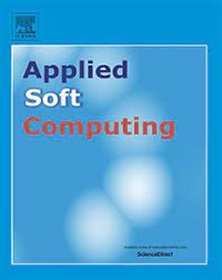Self-expression multi-label feature selection based on fuzzy decision
IF 7.2
1区 计算机科学
Q1 COMPUTER SCIENCE, ARTIFICIAL INTELLIGENCE
引用次数: 0
Abstract
The large amount of high-dimensional data poses a great challenge to multi-label learning. Feature selection is an effective method to alleviate this problem. However, many existing multi-label feature selection models either ignore the intrinsic spatial structure of samples or have no restrictions on the predicted label values. To solve the above problems, a sample self-representation multi-label feature selection method based on fuzzy decision is proposed in this paper. Firstly, a self-representation coefficient matrix of samples is proposed, which not only retains the original data structure information, but also reflects the distribution structure of data. Then, a fuzzy decision function is introduced to fuzzy prediction labels which well represents the membership of a sample to a class and is more consistent with the real label distribution. The -norm is imposed on the feature weight matrix to ensure sparsity and the -norm is introduced into the self-expression matrix to weaken the effects of redundancy and anomalous samples. Finally, the gradient descent method is used to optimize the objective function. Experimental results on 12 multi-label datasets show that the proposed method performs better than other state-of-the-art multi-label feature selection methods, and obtain a significant increase in classification accuracy of about 2%–3% over all the compared approaches.
基于模糊决策的自我表达多标签特征选择
本文章由计算机程序翻译,如有差异,请以英文原文为准。
求助全文
约1分钟内获得全文
求助全文
来源期刊

Applied Soft Computing
工程技术-计算机:跨学科应用
CiteScore
15.80
自引率
6.90%
发文量
874
审稿时长
10.9 months
期刊介绍:
Applied Soft Computing is an international journal promoting an integrated view of soft computing to solve real life problems.The focus is to publish the highest quality research in application and convergence of the areas of Fuzzy Logic, Neural Networks, Evolutionary Computing, Rough Sets and other similar techniques to address real world complexities.
Applied Soft Computing is a rolling publication: articles are published as soon as the editor-in-chief has accepted them. Therefore, the web site will continuously be updated with new articles and the publication time will be short.
 求助内容:
求助内容: 应助结果提醒方式:
应助结果提醒方式:


